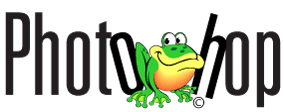Ask Fred FAQ
For best print quality, follow these tips when ordering a canvas, fine art or classic photo print.
File Formats
For best results provide either a flattened 16bit TIFF or PSD file. JPG / JPEG files are acceptable; nevertheless, the inherent compression could result in artifacts being introduced into your photo. We also accept RAW files; however, post processing will be necessary and an additional fee will apply. You will be notified, and an estimate will be provided for your approval before proceeding.
Resolution and Size
The minimum to optimum range for image resolutions for our printers is 150 PPI, 200 PPI, 300 PPI or more. If the print is viewed from a distance of approximately 3 feet or more, then an image resolution of 200 PPI is acceptable or 150 PPI for canvas prints. Please check your photo's print quality with our Image Quality Calculator.
In some cases, it’s possible to enlarge your photo beyond its native resolution. Contact us to see if your digital photo is a good candidate for upsizing. Regardless, there are limitations to upsizing a photo, and some loss of quality may occur.
Sharpening your Photo
Sharpening can be a personal preference. Some people like a very sharp image while others may prefer a softer look. Where your image is viewed will influence the degree of sharpening required. Sharpening an image for print is very different from sharpening for onscreen or online viewing such as the web.
To achieve the best print results, do not apply a final output sharpening prior to submitting your photo for printing. Depending on the printer used, we will apply the optimal amount of sharpening for the product that you have chosen. If we receive a photo that appears to have already had a final output sharpening; we will not apply any additional sharpening.
Nevertheless, if you are doing a final sharpening, inspect your image at 100% or more for obvious halos between dark and light areas. This halo effect, unless intentional, indicates over sharpening, and it will be visible in the final print.

